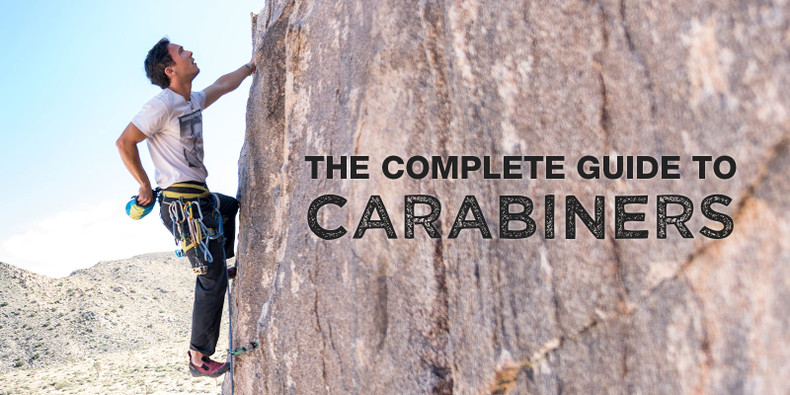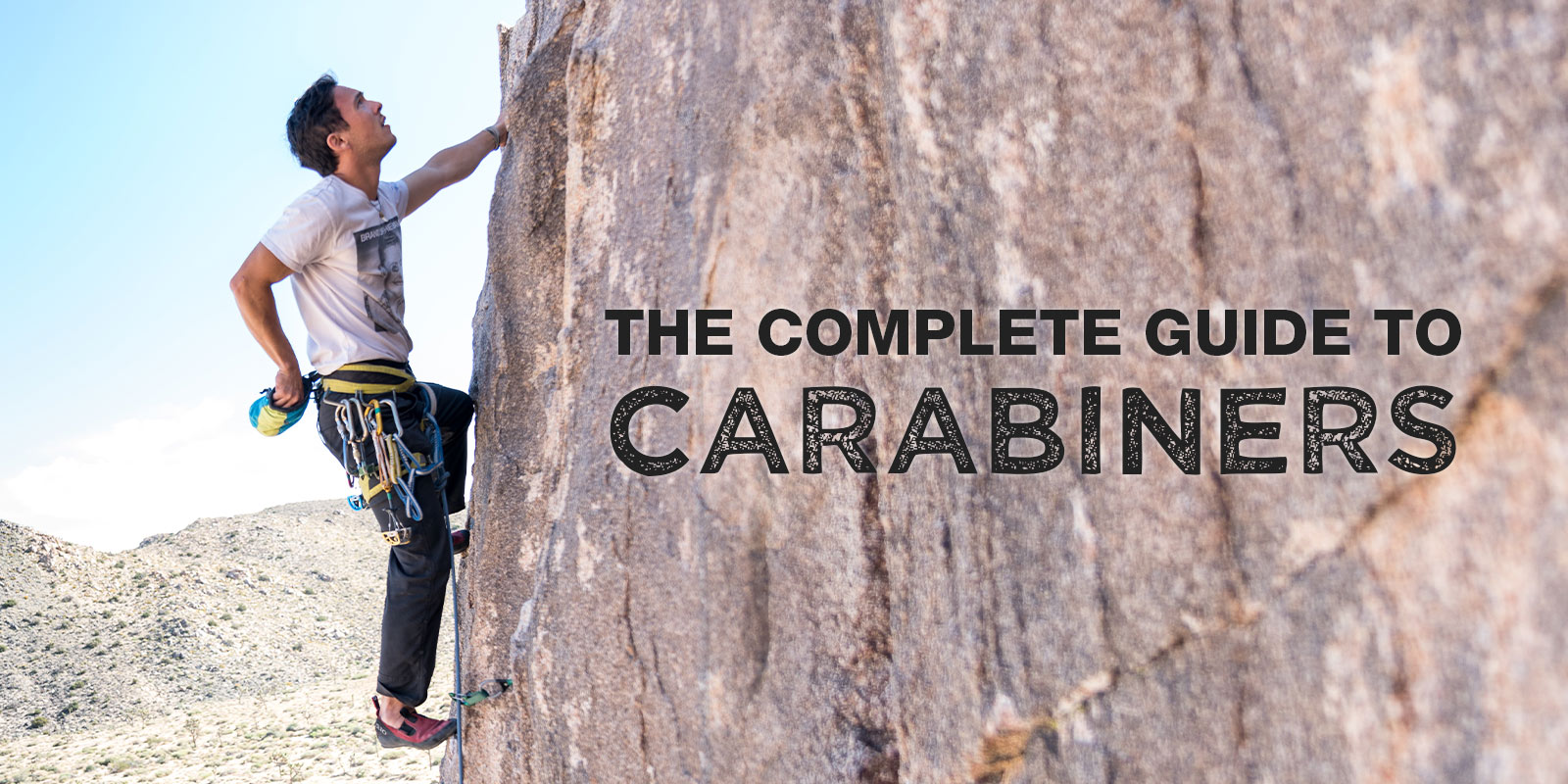
In this guide, we will cover everything you ever wanted to know about carabiners. From its origins, going back over 150 years, to life hacks, to different types of uses and more. If at any stage you need a helping hand to better understand the functions of carabiners don’t be a stranger - reach out.
A Guide To Carabiners:
- What Is A Carabiner?
- What Are The Gate Mechanics Of A Carabiner?
- What Are Carabiner Terms You Should Know?
- What Are The Different Uses Of Carabiners?
- Do Shapes And Weight Matter For Carabiners?
- What Type Of Certifications Do Carabiners Have?
- Final Thoughts
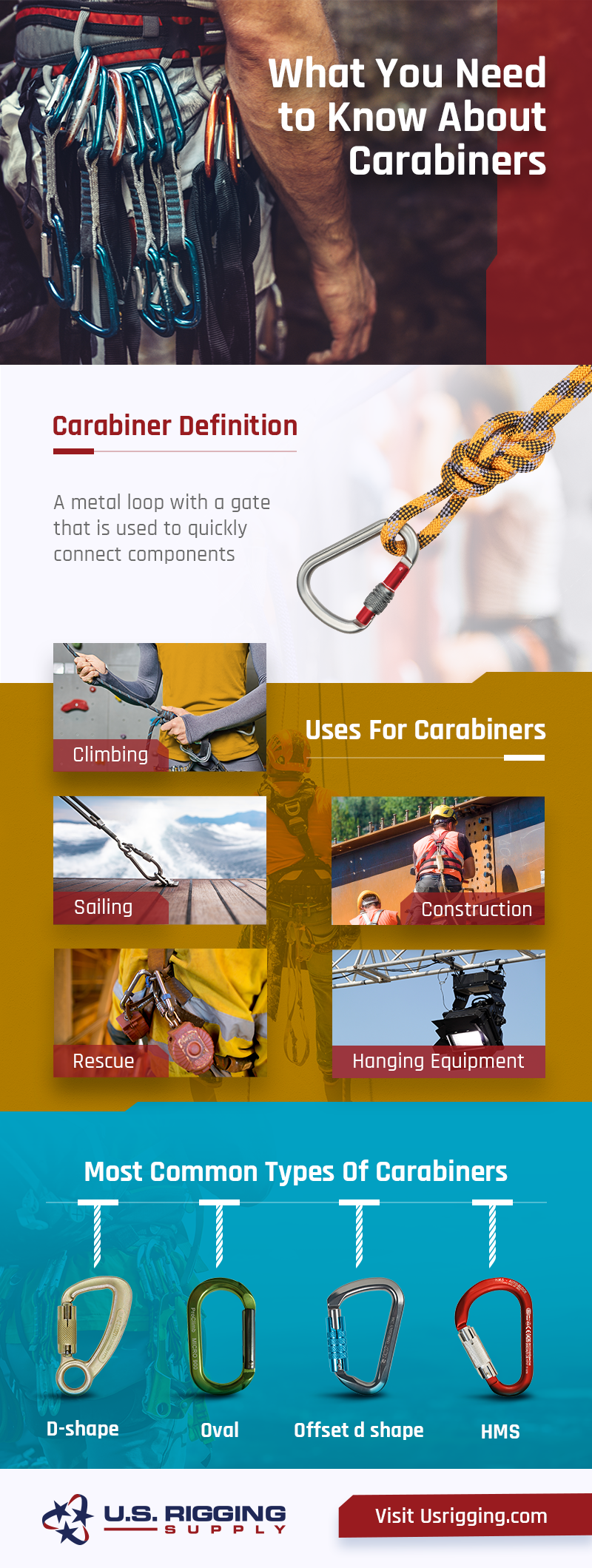
1. What Is A Carabiner?
You’ll see carabiner spelled in two ways: Carabiner or Karabiner. The more popular spelling in America is a carabiner. The word has a German origin "karabinerhaken," which translates to English as “hook for a carabine.” In simple terms, a carabiner is a metal loop with a gate that is used to quickly connect components. Carabiners are designed for the fall protection industry but they do have other life hacks we will cover in this guide.
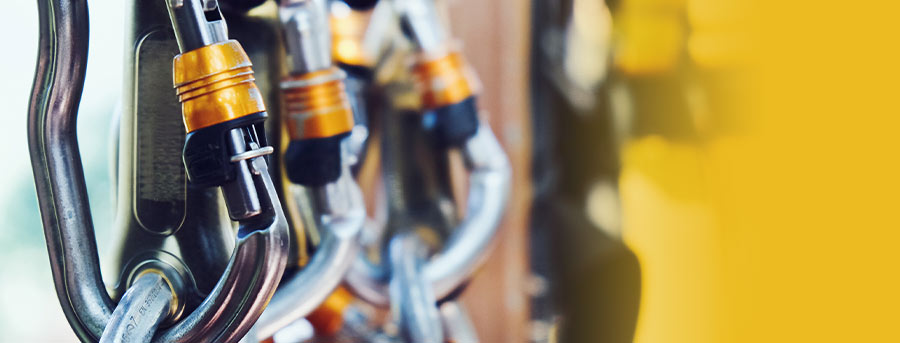
2. What Are The Gate Mechanics Of A Carabiner?
There are basically two main categories to know when looking at the mechanics of carabiner gates: non-locking and locking.
What are strung-gate / snap links / non-locking carabiners?
These types of carabiners have gates that open when you push them. They allow the user to quickly and easily push open a spring-loaded gate and place another connection point such as rope with the loop.
What are screw / twist-lock / locking carabiners?
Locking carabiners require extra steps before you can open the gate. They have a sleeve to secure the gate. Some require a screw action, while others require a twist action to secure it.
3. What Are Carabiner Terms You Should Know?
Cross-Loaded Carabiner Defined
Cross-loading can lead to dangerous situations. This happens when the load from gate to spine is loaded latitudinally. Carabiners are meant to be loaded along their longitudes. When they are cross-loaded they can become up to four times weaker.
Gate Opening For Carabiners
Gate opening is how wide the gate actually opens. When it comes to fall protection, the opening of the gate is essential. The opening size can limit the functionality of the carabiner and how it clips to racks, ropes and more.
Full-Size Carabiner
Full-size is used to differentiate normal sizes carabiners versus the newer, small-sized carabiners currently in the market.
Nose Hooked Carabiner
Nose-hooked is more dangerous than cross-loading. A nose-hooked carabiner can actually break. Nose- hooking occurs when the carabiner accidentally becomes hung on a bolt or sling by its nose.
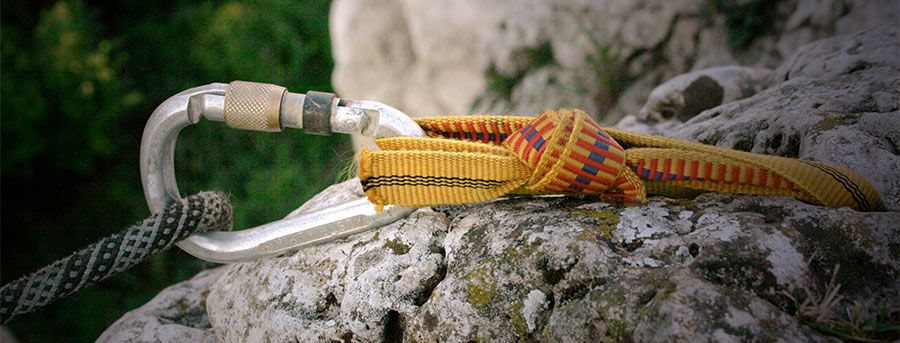
4. What Are The Different Uses Of Carabiners?
Life Hacks Anyone Can Use With Carabiners
- Support For A Dog Leash
- Grocery Bag Carrier
- Cabinet Lock
- Belt Organizer
- Fake Chain Lock
- Wrench Organizer
- Hairband and Rubber-band Organizer
- Key Chain
- Holding Your Water Bottle
- Locking Zippers For Tents On The Inside
- Anchor Point While Kayaking
- Hammock Hanger
- Link Gear Together
Fall Protection Uses For Carabiners
- Climbing
- Arboriculture
- Sailing
- Rope Rescue
- Construction
- Window Cleaning
- Whitewater Rescue
- Acrobatics
- Hot Air Ballooning
- Construction
- Industrial Rope Work
5. Do Shapes And Weight Matter For Carabiners?
The quick answer is, yes it all matters. Keep reading to find out why.
The Different Types Of Materials For Carabiners
Steel carabiners are the most popular used for rescue and industrial rigging. They are much more durable, stronger and heavier than aluminum carabiners. Aluminum carabiners are light and designed for recreational climbing or where weight is a factor ie: indoor and outdoor rock climbing.
Different Carabiner Shapes

The most common types of carabiners you will come across are:
- D-Shape
- Oval
- Offset D Shape
- HMS Carabiner aka Pear Shaped
D-Shape Carabiners
D-Shape Carabiners look like a capital, “D” and are very versatile. They move force away from the gate and toward the spine of the carabiner. They have a wider gate opening and are generally lighter than most carabiners. When it comes to clipping into protection, quickdraws, and locking anchor points - D-Shaped Carabiners are your go to tool.
Offset D-Shape Carabiners
Offset D carabiners are sometimes referred to as asymmetrical or Modified-D carabiners. They are similar to D-Shape Carabiners except the design is exaggerated creating an even wider gate opening. They are the most popular design as they improve functionality due to it having a larger gate opening, lighter shape and stronger design.
Oval Shaped Carabiners
This is the classic carabiner that has been around for years upon years. They are inexpensive and great for climbing. It should be noted they are weaker than other shapes because of the weight transfer between the spine and gate. They also have a narrower gate opening and are fairly heavy.
HMS aka Pear Shaped Carabiners
These are oversized versions of the offset d-shaped carabiners. They are designed to be used when belaying. Climbers tend to prefer these types of carabiners especially when they need to belay devices.
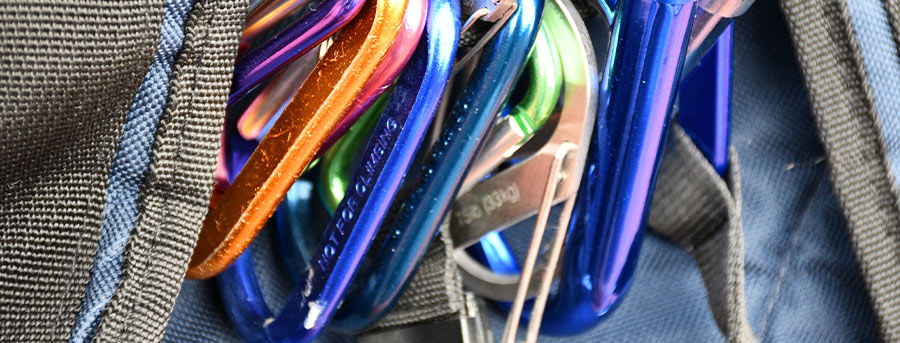
6. What Type Of Certifications Do Carabiners Have?
Carabiners have been around for over 150 years. They were used back in the 1800s where soldiers carried carabine rifles with straps connected by a hook with a gate aka carabiners. They continue to evolve and improve and certifications are printed on the carabiner. Certifications to be aware of are listed below:
Climbing Certifications for Carabiners In The United States
The Minimum Breaking Strength (MBS) requirements for climbing are set out in ASTM Standard F1774. This standard calls for a MBS of 20kN on the long axis, and 7kN on the short axis (cross load).
1 kN=224.809 pounds-force
Rescue Certifications For Carabiners In The United States
Carabiners used for rescue are addressed in ASTM F1956. ASTM requirements for light-use carabiners are 27 kN MBS on the long axis, 7kN on the short axis. Requirements for heavy-duty rescue carabiners are 40kN MBS long axis, 10.68kN short axis.
Fire Rescue Certifications For Carabiners In The United States
Minimum breaking strength requirements and calculations for rescue carabiners used by NFPA compliant agencies are set forth in National Fire Protection Association standard 1983-2017 edition Fire Service Life Safety Rope and Equipment.
There are two classes of rescue carabiners: Technical Use and General Use. Technical use rescue carabiners have a minimum breaking strength of 27kN-gate closed, 7kN gate open, 7kN minor axis. General use rescue carabiners requirements are to have a minimum breaking strength of 40kN gate closed, 11kN gate open, 11kN minor axis.
Fall Protection Certifications For Carabiners In The United States
These are classified as "connectors" and are required to meet Occupational Safety and Health Administration standard 1910.66 App C Personal Fall Arrest System which specifies "drop forged, pressed or formed steel, or made of equivalent materials" and a minimum breaking strength of 5,000 lbf (22 kN).
The ANSI (American National Standard Institute) requires a minimum breaking strength of 5,000 lbf (22kN) and features an auto-locking device with a minimum breaking strength of 3,600 lbf (16kN).
7. Final Thoughts
A carabiner is a vital tool for any rock climber, fall protection and as you can see above be used in day to day activities. They come in different shapes, sizes, material and serve multiple functions. If you are interested in learning more about carabiners please reach out, we’ll be happy to share more information.


